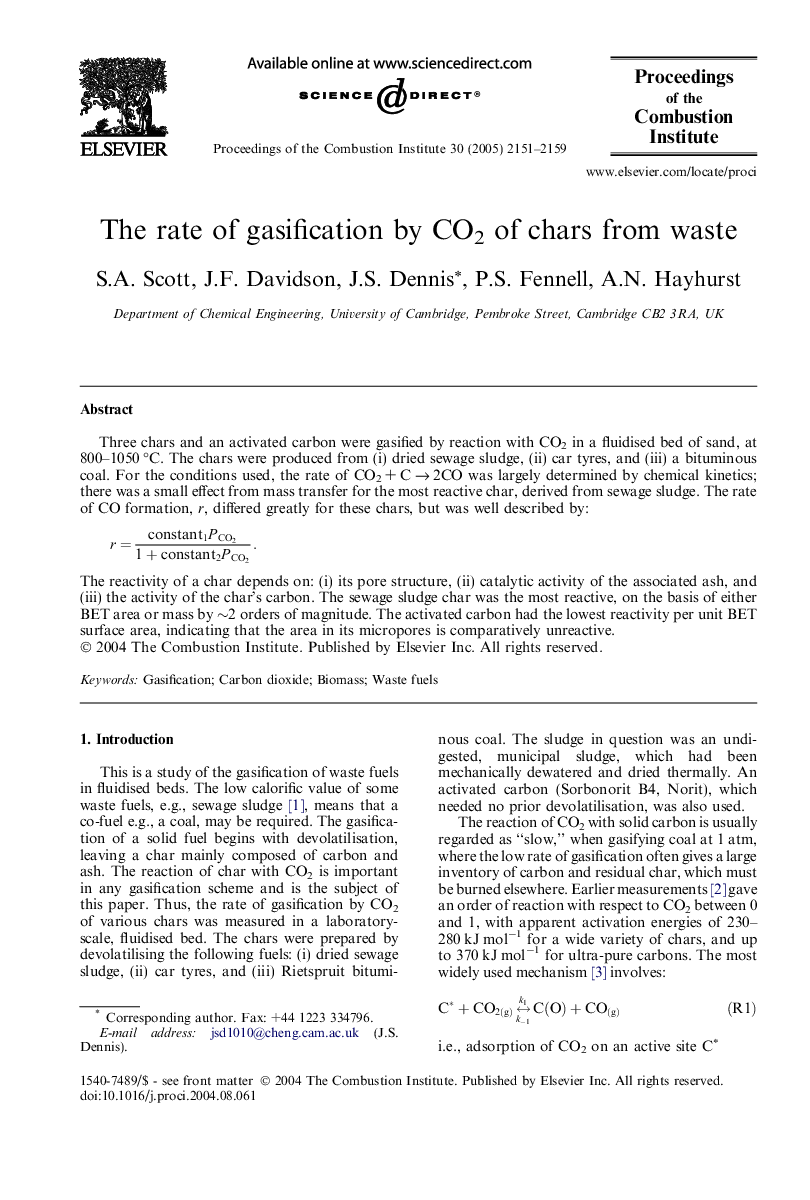| Article ID | Journal | Published Year | Pages | File Type |
|---|---|---|---|---|
| 240959 | Proceedings of the Combustion Institute | 2005 | 9 Pages |
Three chars and an activated carbon were gasified by reaction with CO2 in a fluidised bed of sand, at 800–1050 °C. The chars were produced from (i) dried sewage sludge, (ii) car tyres, and (iii) a bituminous coal. For the conditions used, the rate of CO2 + C → 2CO was largely determined by chemical kinetics; there was a small effect from mass transfer for the most reactive char, derived from sewage sludge. The rate of CO formation, r, differed greatly for these chars, but was well described by:r=constant1PCO21+constant2PCO2.The reactivity of a char depends on: (i) its pore structure, (ii) catalytic activity of the associated ash, and (iii) the activity of the char’s carbon. The sewage sludge char was the most reactive, on the basis of either BET area or mass by ∼2 orders of magnitude. The activated carbon had the lowest reactivity per unit BET surface area, indicating that the area in its micropores is comparatively unreactive.
